#motosada mori
Explore tagged Tumblr posts
Text
Drama CD Metal Gear Solid interviews
The following is a series of interviews that were published in the booklets for the Drama CD Metal Gear Solid series. The booklet for Vol. 1 contains an interview with Hideo Kojima himself, while Vol. 2 contains interview with Motosada Mori (the series’s military advisor, who served as the audio drama’s screenwriter as well) and illustrator Yoji Shinkawa. The scripts for the Metal Gear Solid radio drama has been translated for quite a long time now, but the interviews have not until now.
The Metal Gear Solid radio drama is a non-canonical continuation of the game in which Solid Snake, Meryl Silverburgh, Roy Campbell and Mei-Ling continue working for the U.S. military following the events of the Shadow Moses island takeover as they become involved in new missions set in various conflict zones. You can read a translated transcripts on the following links: Vol. 1 and Vol. 2.

Hideo Kojima
It seems that the story for the Drama CD is set after the events of the game itself.
Don’t think about it too deeply. (laughs) That was my biggest concern when it came to discuss the radio drama. There are quite a few inconsistencies if you think about it seriously. More importantly, I don’t think they [the main characters] would be willing to return to the battlefield after the ending of the game. You’re better off thinking of this audio drama as an alternate story using the same characters.
Mr. Motosada Mori, who worked on the game as a military advisor, seems to had been in charge of writing the script this time...
Originally I was told to write it myself but I wasn’t able to due to various circumstances. So when it came on deciding a writer, it had to be someone who was not only be knowledgeable of the Metal Gear universe, but also be familiar with military and world affairs, as well as firearms... I was wondering if there was such a worthy candidate. Not only does Mr. Mori has the expertise and experience, but he is also a published author. On top of that, he provided entertainment advice on the game itself, so I was confident to assign the job to him. At first I wanted Mr. Mori to employ his own unique gimmick and we thought a lot of what he could add to the script. But then the amount of technical terms he added to the script became too much for the average listener to understand, so we ended up reducing them. (laughs)
By the way, the character of Allen Iishiba was based on someone we knew... When we went to the United States for research, we were able to observe a tank in person thanks to a friend of Mr. Mori in the U.S. Army, so he became the inspiration for that character. [Translator’s note: The person in particular is Tomoaki Iishiba, who is credited as one of the military advisors alongside a Michael Allen.]
Were there any difficulties when it came to the difference in expression between a videogame and an audio-only CD?
Perhaps this is the fate of videogames as a medium, but there is a chance that if you only hear a line of dialogue once, you might not understand it the first time, so we have to repeat things like a parrot during conversations. [Translator’s note: This is why most conversations in the MGS series end with Snake repeating what the other person said in the form of a question] As a result, we end up writing dialogue that would seem out of place in a normal conversation. We had no choice but to write like that in order to make the game easier to understand, but because this is purely an audio drama this time, it covers more acoustics than the game itself. Therefore, the difference between the mediums was not a problem at all.
Finally, can you give us any last words?
I think that the Drama CD will depict a lot of things that could not be done in a videogame. Give Mr. Mori my regards. (laughs)

Motosada Mori
You worked as a military advisor in the original Metal Gear Solid game, but this time you’re writing the screenplay...
I actually played Policenauts when it was first released, so my feelings are rather complicated. I became a fan of Kojima because of Policenauts. While observing the game’s development process, I thought many times about how it would be like to be one of the players anticipating its release. Putting it in another way, I might be wondering if it was going to be a good game and I would wish to play it without knowing anything about it... (laughs) If there is ever a next game, I want to be just a player.
This time you’re working on an audio drama. Did that present any difficulties?
How to depict the world of Metal Gear without the use of visuals? That was the biggest challenge. Moreover, whether you’re listening to just one episode or the one that comes after, you have to write them like a single storyline. On top of that, I intended to write a drama that would appeal to both, people who played the original game and those that didn’t. Nonetheless, it was difficult. Writing the screenplay was an everyday hell. Basically, the story takes place after the events of the game, but like Mr. Kojima said, writing a story that follows the ending of that game was the best opportunity to show off my skills. To what extend can you demonstrate a unique worldview? The results is a kind of progression that proceeds from the video game to the audio drama and vice-versa.
Were there any instances where you based the story or characters on your experience?
Most of the incidents, including the characters who appear in it, are fictional, but some of it is partly based on my own experiences. For example, is it possible to distinguish between good and evil on the battlefield? The characters in this story, like Schultz, Cortez and Ivanovich, all act in their own interests, believe in themselves and try to justify their means. It’s a rule that doesn’t work at all on a normal society, but somehow you can get away with on the battlefield. Those with power seize everything. This is a drama about tragic men who were drunk on a power struggle and were conversely swallowed into it.
Finally, can you give us a few last words?
Enjoy this audio drama and let us know what you think! I want to make the best use [of your feedback] next time... Will there be even be a next time, Mr. Kojima?

Yoji Shinkawa
There are many characters being drawn for the first time for the Drama CD. What kind of mood do you usually have when you design a character?
My creation method varies depending on the character. For Allen Iishiba... well, he was modeled after a real person. (laughs) He was actually a gentle guy, but he became a bit scary in the artwork that I drew.
For Sergei Ivanovich, I originally drew him as an older man in his 50s or 60s, but then Mr. Kojima requested him to be “a younger and cooler type.” When I asked him what kind of feeling he wanted from the character, he answered “someone like Tony Redwood [a character from Policenauts].” I then drew him younger, but he still didn’t stand out, so I wanted him to hold a small arm. I asked Mr. Mori if it was alright if he was holding a knife and he answered that was fine. It’s the same feeling I had when working with Mr. Kojima.
The image of Marc Cortez was that of a brave soldier with a decisive military history. However, since he is a character of questionable allegiance, I gave him a hat that obscured his eyes in order to make him look very suspicious. Maybe it’s just like Roy Campbell and his beret or Master Miller and his sunglasses. Can you recognize a character with just that [an accessory] alone?
The familiar characters from the original game all appear in new outfits here too. Especially Meryl Silverburgh, who looks cool in her sneaking suit!
After the Metal Gear Solid game finished development, I wanted to have [Meryl wear the sneaking suit] and did a drawing. It felt quite right, so I asked Mr. Mori about it. She’s armed with just a single Desert Eagle pistol, so she would need the infinite ammo bandanna to match Solid Snake... (laughs). Just kidding about that. I wanted Meryl to be depicted much closer to her namesake from Policenauts.
Speaking of weapons, there’s seems to be quite an elaboration on them in this Drama CD...
That’s right! Even the AKM assault rifles wielded by the bad guys was chosen by Mr. Mori. I’m pretty sure it was his choice. I always think of the visuals first in my case. We had a few meetings before producing the Drama CD and I was surprised when they brought in an AKM without any prior announcement, as it was very different from how I was imagining it. But it was fun to collect reference materials. I was grinning while drawing them.
12 notes
·
View notes
Text
Tuesday, 4th of october 2005
Rain drizzled as I left home this morning. A folding umbrella was in my bag, but I was too lazy to pull it out. I just walked without it. Salarymen used their umbrellas as they walked. Office women walked up and down the streets, fretting about getting wet ; even from underneath their umbrellas.
I turned to take a shortcut to the train station and walked among the faceless people. Then a housewife charged me! She held an umbrella while she rode a bicycle. She wasn't watching where she was going and almost ran into me. Nobody watches where they are going; everyone just wants to keep dry.
In front of the station, I ran into a phalanx of uniformed students. They crowded the street, unhurried and playing around. They acted as if the drizzle wasn't falling upon them: they didn't care about water in their hair and clothes. They jumped around all the adults shielding themselves beneath umbrellas.
Is this youth, then? Is this a living example of tabula rasa - natural simplicity? And is this adulthood with all of these people chained and clinging to stability, clinging to the controlled life?
I don't intend to enjoy the rain, yet I am too lazy to pop open my umbrella. I don't fit in either group. I would still like to avoid becoming wet if I can.
I realize that I have lived like this for a while. I don't want to say that the work is dull. The thing is, I really don't want to work. I only want to create. I realize now that I am harangued by the work needed to create.
Today is our new assistant's first day. I hope Kojima Productions' routines and methods become familiar to our new assistant, so that we can work openly together. You might think differently, but a studio's assistants determine the quality of that studio's creations. If Kojima Productions makes good games, then we should thank the good atmosphere around here. We owe our assistants for our good atmosphere.
Mrs. Yamanaka and Ms. Miyamoto support us so much from behind the front lines. Their work and attentiveness are laudable. The average person can't give as much of himself to his work as they give to theirs. The men on the staff (including myself) tend to misinterpret their devotion and think, "Perhaps they are in love with us." Nothing could be farther from the truth. Men are daft; we always think this way.
Now our assistants at Kojima Productions number to three people - and all of them are from the Kansai region.
I ate Gingjiao Rousi at the restaurant Fuuton San Raakyo for lunch. Afterward, I bought the two-DVD set of New Order's Best Story at Tsutaya. I already own the contents of the second DVD (The New Order Story) on Laserdisc, so I'll save it for later. I want to watch the first disc (New Order: A Collection) as soon as possible.
I checked the sound for chapter five on Existence. I am finally at the fifth chapter… only three remain. Keep it up, Sound Group!
We gave interviews with Animation Note this afternoon. They are a magazine for the creators of future games with a special emphasis on technical news. The magazine will be published at the end of November. I spoke to them about the paths I've taken in my life from childhood to the present day. I discussed the difficulties that I experience while working, as well as how I manage my energy during the creative process.
Whenever I give interviews like this I become aware of something: I always regard the years during which I entered the video game industry as notably happy. I lusted to create… my days were unrestrained and free. It had none of the burdensome responsibilities that I carry now. I had nothing to lose.
I only wanted the pleasure of creating. We weren't professionals. Sometimes we weren't even very good. Yet our eyes were un-shuttered and full of light.
Shin-Chan and Masaocchi gave interviews following mine.
Mr. Motosada Mori (who lectured us on military matters a few days ago) brought a certain type of weapon to our attention. Mataan tracked down information on this weapon and compiled it into a dossier. We updated our Weapon Database Page to include the information. (Only MGS team members may access this database.)
This is incredible! Mind-blowing! Can we integrate this weapon into the game? I really want to see it in the game! It will be even better if players can use this weapon. If we can realize this goal, it'll be a killer addition. I'm ecstatic! I haven't felt like this in quite some time!
Yesterday, during the celebration party given in honor of the completion of Director Yudai Yamaguchi's film, I brought up Dario Argento. (Naturally we are both tremendous fans of Argento. He and John Carpenter are my generation's heroes.) Director Yamaguchi and I spoke passionately about the Suspiria Ultimate Collection which comes in three DVD's. It was released back in July. We also raved about Romero's Land of the Dead, which is Asia's latest movie.
Then Director Yamaguchi mentioned Argento's recent film The Card Player. The film's music was made by Claudia Simonetti, a former member of the band Goblin. I had not seen the movie at the time of our conversation. I consider myself a hardcore Argento fan, so I felt a bit ashamed for having missed the film.
I saw The Card Player on Ichiro Kutome's desk when I walked by today. I wonder if it was fate or conspiracy. I don't care which. I borrowed The Card Player DVD from him. Unfortunately, it will be a while before I have time to watch it.
I saw Shinobi tonight during the theater's final showing. Mr. Taku Sakaguchi gave a hypnotic performance as a shinobi. He looked really cool during the action sequences when he wore his long-sleeved kimono. However, it was strange to see him walk around in the same clothing when he wasn't in an action scene.
I began preparing for tomorrow's Psychological Boot Camp.
0 notes
Link
By Marc Laidlaw (Not the valve one) I also got the rips..if someones wants them let me know...
1 note
·
View note
Text
Kojima Cinema Vol. 4: Lost World

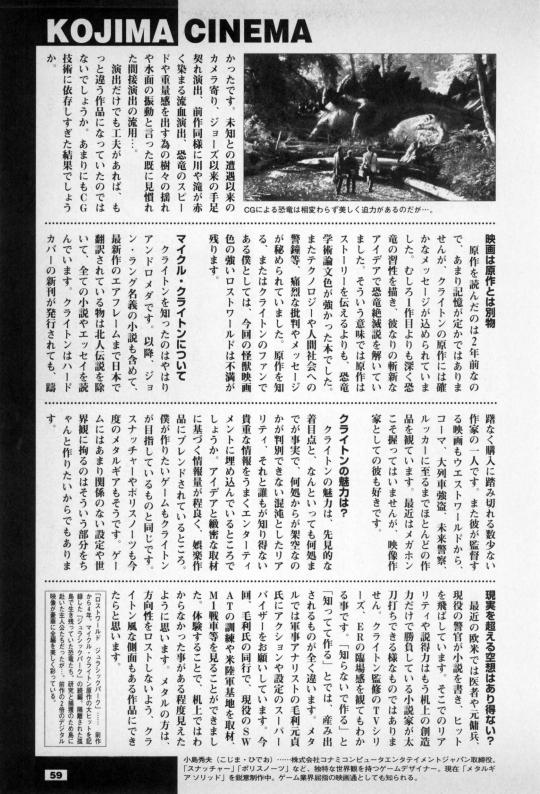
Greetings from Kojima Cinema in the U.S.
At the end of the previous month we went to the United States to attend the Electronic Entertainment Expo (E3), as well to research data for Metal Gear Solid. For this installment of Kojima Cinema, I'll discuss Lost World, the sequel to Jurassic Park, which I snuck out to see after attending E3, as well as its creator Michael Crichton (who happens to be one of my favorite authors).
By the way, Lost Warld (as in a combination of World and War) was the title of a canceled project that was planned to be my first game.
Lost World from Atlanta
I saw Lost World in a movie theater inside the CNN building in Atlanta. Since it hasn't been released in Japan yet, I was able to see it without any preconceived notions, but it ended up being very disappointing. Certainly there's a lot more CGI than the first movie and the dinosaurs are even better animated, but the story was way too much like a Godzilla movie. (Or maybe it was more like King Kong? Perhaps it's closer to Gappa: The Triphibian Monster?) At any rate, what happened to Michael Crichton's original story? I felt like going to Steven Spielberg and tell him "please, don't ruin Crichton's work anymore!"
Better CGI, But Half The Impact
I'm already used to seeing CGI dinosaurs, so there wasn't as much of an impact as there was for the first movie. I remember being moved to tears during the first movie when the Brachiosaurus, the first dinosaur, showed up as if I was glad to see one alive. There's a similar scene in this movie where they encounter a group of Stegosauruses and then Dr. Ian Malcolm says something along the lines of "everyone is impressed at first, but then they all run away" (there were no subtitles, so I'm not certain), which is nothing but ironic.
Jurassic Park: The Ride: The Movie
Ultimately the movie's priority is to charm the audience by showing off dinosaurs. It felt as if the plot and the characters were only added there as an excuse to showcase all the popular dinosaurs like the Compsognathus, the raptors and the T-Rex. It felt less like a movie written to tell a story and more like a film version of the "Jurassic Park: The Ride" attraction at Universal Studios. If you look at it with that perspective, it's a well-made and calculated film.
Despite A Noticeable Rut in the Production, Spielberg's Style is Still in Good Health
Spielberg's heart-pounding style is still in good health despite all of this. The scene where the trailer is falling off the edge of a cliff could be said to be one of the highlights in Spielberg's career. I don't like it very much, but the succession of one crisis after the other makes my hands sweat. Especially the gimmick of the glass gradually breaking is a novelty that no one else has done before. But I was left with one unanswered question. Why does the rear hatch of the trailer only has one sheet glass?
Unfortunately there were many scenes that ended up being not very interesting due to the usual hackneyed direction. There are many indirect effects that we're already familiar with, such as the camera tracking used since Close Encounters of the Third Kind, the use of lost limbs as seen in Jaws, rivers and waterfall turning red due to bloodshed, also seen in the original movie, and the swaying of trees and vibrations of water surfaces that gives the dinosaurs a sense of speed and weight... Perhaps the film would've been very different if the direction had been more creative. Was this the result of relying too much on CGI?
The Movie is Not The Novel
It's been two years since I've read the original novel by Michael Crichton, so I might not remember the details clearly, but it contained a certain message. He portrayed the habits of dinosaurs more extensively than in his first novel and even unraveled the dinosaur extinction theory with his novel ideas. In that sense, the book was less of a story and more of an academic study on dinosaurs. It also carried poignant criticisms and messages, such as warnings about technology and human society. As a fan of Crichton who was aware of the original novel, this film adaptation with its strong giant monster movie flavor left me dissastisfed.
About Michael Crichton
My introduction Michael Crichton was naturally The Andromeda Strain. Since then I've read all of his novels and essays that were translated to Japanese, including his work under the John Lange penname, all the way up to Airframe, with the exception of Eaters of the Dead. Crichton is one of the few authors whom I buy the first edition hardcovers from without hesitation. I've also seen many of the films he has directed such as Westworld, Coma, The Great Train Robbery, Runaway and even Looker. I like him as a filmmaker, even if he hasn't been holding the megaphone lately.
The Appeal of Crichton
Perhaps Crichton's appeal is that he has a visionary focus, creates a chaotic reality that is difficult to distinguish what is fact from fiction and skillfully embeds valuable information that few people know into his entertainment. The amount of data based on ideas and meticulous research is skillfully blended into products of entertainment. I aspire for the same thing Michael Crichton does in the games that I want to make. That's how I developed Snatcher and Policenauts, and it's the same thing with the upcoming Metal Gear Solid. The reason why I'm so fixated over creating a backstory or universe that doesn't really affect how a game works is because I want to get those aspects right.
Is A Fiction That Exceeds Reality Possible?
Lately there have been novels written by doctors, former mercenaries and even active policemen that ended up becoming hits. The realism and persuasiveness of such works is not something an average novelist can compete with just their imagination alone. Even I realized that when watching ER, a TV series that Michael Crichton created. What you create with knowledge will end up being completely different from what you create without. That's why asked for military advisor Motosada Mori to supervise the action and backstory in Metal Gear Solid. Recently, alongside Mr. Mori, we were able to gather research at a SWAT drill and a military base, where even saw an M1 tank. I think I was able to understand some things with such experience that I wouldn't able to from working at a desk alone. With Metal Gear Solid I hope I will able to create a video game with a Crichton-like aspect to it and not be lost in direction.
Source: Game Hihyо̄ Vol. 16 (September 1997), page 58-59
33 notes
·
View notes
Text
1998 Metal Gear Solid art commentary from Yoji Shinkawa (revised translation)
Source:http://web.archive.org/web/20050109031649/http://www.konamijpn.com:80/products/metalgear/art/index.html
The following is a translation of various artwork commentary by Metal Gear Solid illustrator Yoji Shinkawa that were posted on the game’s official Japanese website on July 9, 1998. These pages remained online until 2008, when Konami decided to relaunch the website in order to promote the digital download release of the game on the PlayStation Store.
I posted an earlier translation of these blog posts on March 8 of this year (2019) that was missing most of the illustrations being described, since the image files were not archived. I’ve since found the missing image files on another website and took the liberty of revising my translation to fix mistakes or clarify certain statements. I’ve tried to edit the original blog post, but for some reason tumblr didn’t allow me to upload any new images, so I decided to delete it and post the revision as a new blog post.
I’ve also found the images of the scratch Metal Gear REX model sculpted by Yoji Shinkawa that were uploaded on the official site, but unfortunately they were watermarked by a fansite that copied them back in the day. With that said, it’s still better than nothing, so I added them at the end of this blog poster.
Unfortunately, I still haven’t found any of the photos used on the seventh blog post, so that will still remain untranslated for the time being.

Interviewer: First of all, it’s a pleasure to talk to you Mr. Shinkawa.
Shinkawa: Please to meet you too.
Interviewer: I’ll start by asking about the game’s protagonist Solid Snake. What kind of details were you paying attention to when designing his character.
Shinkawa: Well I talked about this before in Konami Magazine Vol. 2, but there were two Metal Gear games prior to this one, so I struggled to find a balance between them. The Snake in the original Metal Gear looked like a young musclebound guy, while in Metal Gear 2 he was more of a bitter middle-aged man. This time Mr. Kojima’s image of Snake was one of having a tough and athletic body like Jean-Claude Van Damme combined with the middle-aged nature of someone like Christopher Walken. As a result, he became something of a middle ground between the two.
Interviewer: I see. What was your work after Snake’s image was decided on?
Shinkawa: The truth is I had trouble designing his costume. At the beginning I was thinking of a conventional military uniform in blue urban camo. But then I thought it might had been a bit too careless to have Snake swim underwater wearing such a uniform. Since the story takes place in the near future, he ended up wearing a costume made of leather and waterproof material.
Interviewer: It’s an amazing attention to detail that you kept in mind Snake’s infiltration route when designing his costume. So there’s a scene where Snake is underwater? What happens if the Ninja lands in a pond or something?
Shinkawa: What would happen? Huh... He would spark up and then yell something like “Water! My weakness!” (laugh) Just kidding.
Interviewer: (laughs) I guess not.
Shinkawa: It’s hard to know when it comes to Mr. Kojima though...
Interviewer: Don’t worry about it. By the way, is there any behind-the-scenes stories about the game’s development.
Shinkawa: Yes. It’s not much of an inside story, but I drew Ninja in a train.
Interviewer: During a train ride?
Shinkawa: Yes, I drew him while riding a commuter train. I was stationed at Osaka at the time. Most of the people there not friendly, so I would spent time observing the college girls.
Interviewer: That’s pretty nice.
Shinkawa:I guess so. But the friendliness here is good though. But Tokyo doesn’t have such a thing, so it feels a bit lonely. How I should say this, but there’s something that could be described as “enjoying the reaction of people watching in my direction” that could be seen not just over there, but here too.
Interviewer: So that’s how you train your sense of observation!
Shinkawa: No, that’s not what I meant. (laughs)
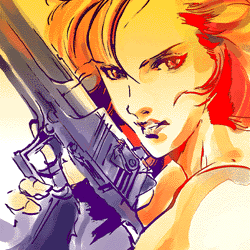
Interviewer: Is there a type of woman that you like?
Shinkawa: I wonder about that.
Interviewer: I’m sorry, that was such a trite question. Let me rephrase that. Is there a particular celebrity that you like?
Shinkawa: I guess I have no choice. My type would be someone like Shinobu Nakayama.
Interviewer: Is that so? Personally I’m a fan of Yuki Uchida if you’re curious to know...
Shinkawa: Yeah, she’s not bad.
Interviewer: Ah!
Shinkawa: Well, let’s put that subject aside. The truth is that the character of Mei-Ling was actually modeled after Nakayama herself. I used to watch her drama series.
Interviewer: Ah! That’s such an interesting thing to learn. Now that you say that, Mei-Ling really does resemble Nakayama looking at her closely, doesn’t she?
Shinkawa: Mei-Ling was written to be a bubbly college girl. She tends heavily to my taste, since she’s in the right age range and has my ideal image.
Interviewer: That’s nice. Having your preferences tied directly to your job.
Shinkawa: It’s not just mine. The character of Dr. Naomi Hunter was made to suit Mr. Kojima’s preferences too.
Interviewer: I see. Huh? At this rate, will you have a type for everyone?
Shinkawa: That wasn’t the intention, but... (laughs)
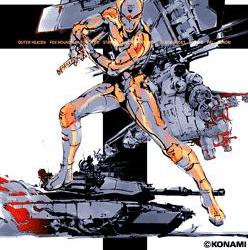
Interviewer: When was this drawn?
Shinkawa: I think it was around the end of last year. Huh? Around six months ago. Time sure fly quickly! I drew it for a magazine ad.
Interviewer: I heard the Ninja was your idea.
Shinkawa:That’s right. But originally there was a trio. They would say something like “Worya! Trinity Attack!” and they were going to have random kanji characters on their backs such as flame (炎) or horse (馬) without any particular significance.
Interviewer: “Fire” doesn’t seem so unreasonable, but why “horse”?
Shinkawa: I’ve mentioned “horse” as a joke, but that sort of thing happens very often, doesn’t it? When it comes to the image of Japan from a foreign perspective, while the outline is the same, the finer details differ. I like that kind of thing. The finalized design of the Ninja is and isn’t a ninja. If nobody told you he was a ninja, you wouldn’t think of him as one. But if someone points out that he must be a ninja because he has some ninja-like parts if you look at him closely, then you might think of him as one.
Interviewer: Is that so? That’s the Shinkawa magic!
Shinkawa: (laughs) What’s that?
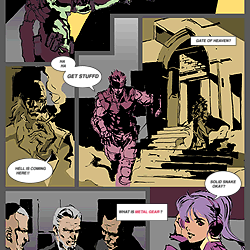
Interviewer: I think I’ve seen this artwork a long time ago.
Shinkawa: It was first published around a year ago.
Interviewer: I see. So why did you draw it like an American comic book?
Shinkawa: Well, in reality I was going for a BD-style. Doesn’t it look like that?
Interviewer: I’m sorry, but what does BD mean?
Shinkawa: It stands for bande dessinée, which is the term for graphic novels in France. It means “sequential art”.
Interviewer: Huh, I did not know. So, is there a particular reason why you chose the BD-style?
Shinkawa: Of course! There is a reason. While talking to Mr. Kojima during the early stages, he said “Alright! Let’s turn Metal Gear into B.D” as a conceptual image. So I drew a few illustrations like that. This one was used as promotional art.
Interviewer: I see. So that’s the reason. And this one was perfect for a promotional artwork. Huh! Why is Gatse Becker [the BCPD chief from Policenauts] there?
Shinkawa: That’s not him. (laughs) It’s the Secretary of Defense [Jim Houseman]... Jeez... (While saying this, Shinkawa’s mouse keeps hovering on Mei-Ling for some reason.)
Interviewer: (nervous face) Uhh... Mei-Ling’s skirt seems awfully short... By the way, will you be able to shake the female characters’ breasts like in Policenauts?
Shinkawa:...That’s classified information!
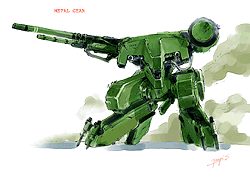
Interviewer: Well, here’s REX. Is there anything particularly different about this Metal Gear model?
Shinkawa: The Metal Gears in the previous two games had weak legs, so this new version has a strengthened lower body. During the initial planning I came up with several illustrations and settings, but the finalized version was settled pretty quickly.
Interviewer: How so?
Shinkawa: Since it was going to be turned into a polygon model, I made it into an actual model in order to solidify its conceptual image and verify its functions.
Interviewer: Is that so? Please show the model to me.
Shinkawa: Of course! REX was designed purely as a weapon, so it’s not exactly a heroic mecha. I decided on a dinosaur-like design like this one, since it conveyed a scary and grim image.

Shinkawa: There are three types of enemy soldiers shown here. From left to right: we have the light infantry, the heavy infantry and the arctic warfare soldier (nicknamed Yukinko by the developers). There’s also a gas mask-wearing fourth type.
Interviewer: Were you given any sort of references to use?
Shinkawa: I had books and photos that were given to me by Mr. Motosada Mori (MGS’s military advisor).
Interviewer: All the enemy soldiers have their faces covered up. Was that decided because they were terrorists?
Shinkawa: That’s certainly something that could be think of, but there’s actually more important reasons.
Interviewer: Huh? Explain!
Shinkawa: Simply put, we needed to reduce the number of polygons.
Interviewer: Is that really the reason?
Shinkawa: If you want to draw faces on your characters, you have to use quite a few polygons to get them to a satisfactory level, which ends up consuming too much resources. When taking into consideration the game as a whole, you got no choice but to trim certain parts. It’s a shame, but in the end I think the finalized designs suit the enemy soldiers better.
Interviewer: It’s a matter of balancing supply and demand. By the way, I really like the helmet worm by the Heavily Armed Troops. You don’t see them often in the game though.
Shinkawa: Well that helmet is an original design. Like everything, I try to keep things intuitive for game-playing purposes. The enemy soldiers are color-coded from left to right: brown, green and white, plus yellow for the gas mask-wearing soldiers.
Interviewer: There are indeed a variety of schemes. By the way, the arctic warfare soldiers are layered with clothing. Snake spends most of the game in arctic environments, but he isn’t wearing that much. Why is that?
Shinkawa: He’s wearing a high-tech suit.
Interviewer: You said it so bluntly... (laughs) One last nitpicky question. Who does the laundry in the base?
Shinkawa: They use a laundry machine. (laughs)
Metal Gear REX Model Photos
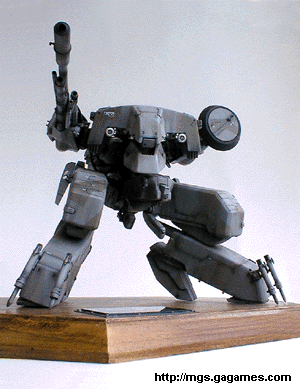
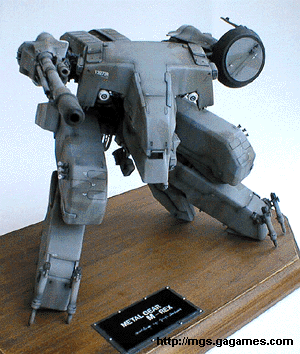
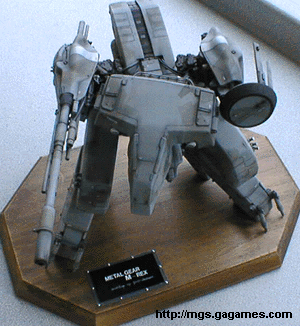
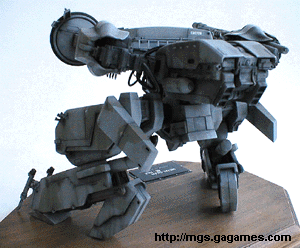
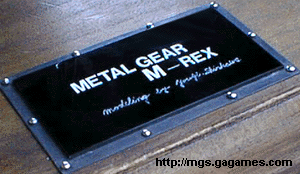
13 notes
·
View notes